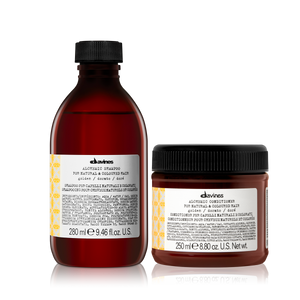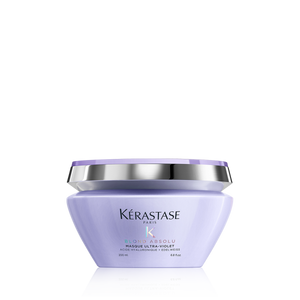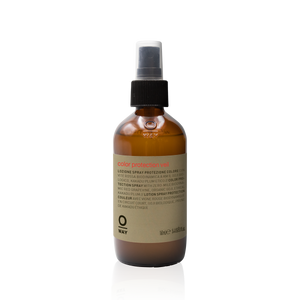EVERYTHING YOU NEED TO KNOW ABOUT BALAYAGE
The balayage hair colour trend has exploded over the last decade. But did you know it originally dates back to the 1970s?
"Balayage is a French technique that was created by the Carita sisters and developed in the US," says Marvyn Duche, senior colourist at Paul Edmonds London. "It came to our market in the UK around 15 or 20 years ago."
Parisian hairdresser duo Rosy and Mary Carita named the bespoke technique after the French for 'to sweep', reflecting the way colour was painted freehand onto hair, creating a beautifully blended and natural look.
Since then, balayage has become a global phenomenon, used by colourists to add seamless depth and dimension with everything from honey blonde to deep brunette hair.
Done well, it creates the illusion that you've been blessed with thick, multi-tonal locks, and it's a brilliant option if you're looking to refresh your look for spring.
We asked Marvyn to explain all about balayage and the colour trends he's loving at the moment…
What is balayage?
"Balayage is a painting technique," Marvyn says. "Instead of putting hair in foils as you would with highlights, you're painting the hair then wrapping it in plastic."
Some colourists use a balayage board to hold the section of hair in place, a bit like a painter working on a canvas, while others work with loose sections, applying the dye with a brush in V or W shapes to create a multi-tonal finish.
"You can either lighten the hair up or make it a bit darker," Marvyn says. "We call that reverse balayage - instead of bringing more light into the hair we increase the darkness."
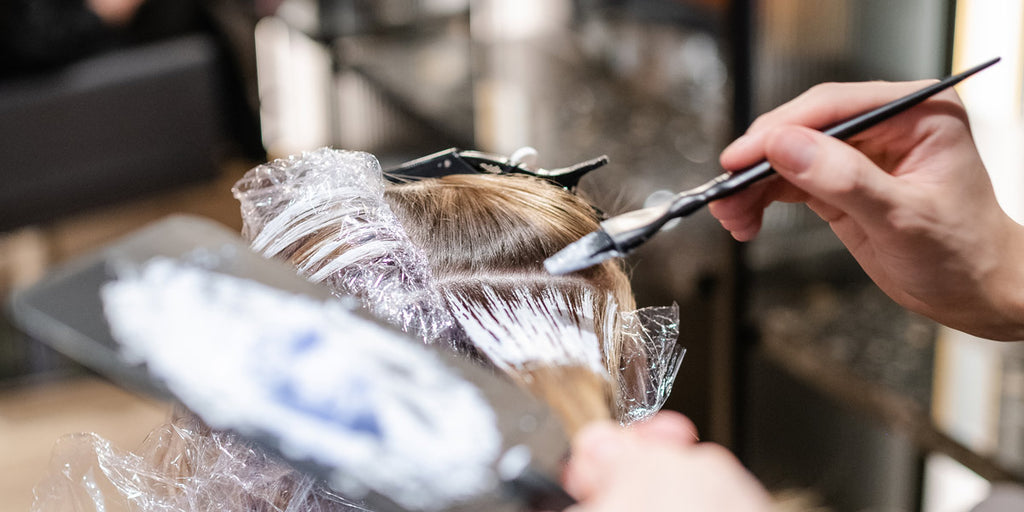
Why is balayage better than highlights or all-over colour?
There are several advantages to using the bespoke balayage process instead of other colour techniques.
"It's easier for me to recreate something more natural," Marvyn explains, especially if a client wants to lighten their hair. "Balayage is recreating what you can get naturally from the sun when you go on holiday."
Freehand painting can also help to achieve a youthful feeling when your colourist recreates the natural pattern of shades found on virgin hair, with lighter sections through the midlengths and closer to the face.
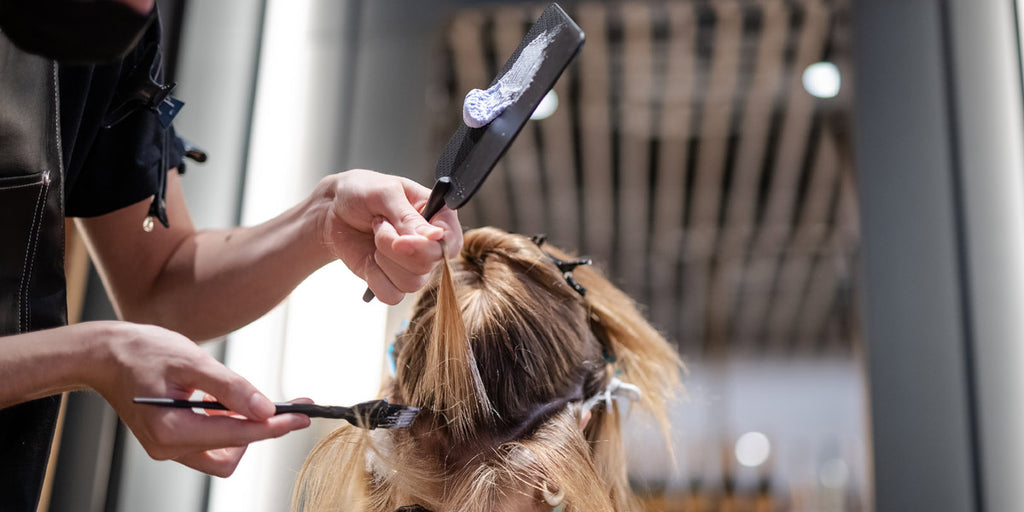
It's also easier in terms of maintenance: "When you do highlights you tend to leave the hair quite light from the roots, but with balayage you get this softness and graduation of the colour so the roots don't appear as strong."
Which means you can leave it a bit longer between appointments, Marvyn adds: "This technique gives you the ability to not redo it every six weeks. You have a nice colour for longer and it's just a bit softer."
Plus, you can opt for a glaze treatment or root touch-up to refresh your look and keep your hair looking healthy and shiny until you're ready for your next balayage application.
As for at-home upkeep, switching to shampoo and conditioner for colour-treated hair and adding a heat protection spray to your routine will keep your colour looking fresh and vibrant.
What hair lengths can you do balayage on?
Typical examples of balayage on social media often involve long, wavy locks, but in reality, freehand colouring can be done on virtually any hair type.
"It's really up to you - the only limit is your imagination," Marvyn says.
"It could be really short or really long hair. Obviously the longer and the thicker the hair, the longer the process will be."
Colourists will vary the technique and their tools according to the hair length, he explains: "For example, on short hair, I use hairspray to make the hair spiky and use only my hands to apply the dye."
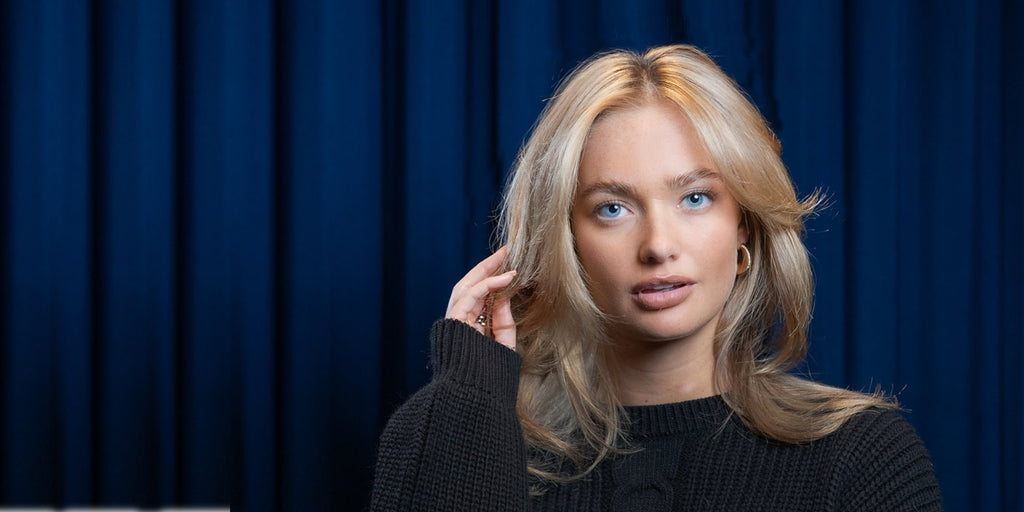
What are the biggest balayage colour trends at the moment?
For spring, Marvyn predicts that bold blondes and soft brunettes will be the hottest hair colour trends.
"Really blonde, starting at the roots, is coming back," he says. "And the blonde short bob with quite creamy tones."
If you're starting with a brown base colour, he suggests warming up the shade but starting further away from the roots: "In terms of brunette, I love caramel or honey tones with soft balayage, but always a strong face frame, meaning something a bit lighter around the face."
Can you do balayage on men's hair?
"Balayage for men's hair has become really trendy at the moment," Marvyn says. "I've done quite a lot recently and I've had it on my own hair."
He's had clients who want to rock a Nineties look: "They were inspired by Brad Pitt when he was on the TV series Friends and he was really blonde. They wanted to recreate this kind of style."
There's one main difference he's noticed when it comes to balayage for male and female clients.
"In terms of balayage the colour on women's is a bit softer because we tend to do glosses and make it really nice and shiny," Marvyn says. "Whereas men's is a bit more bold in a way, it's not as soft and natural."
Wondering if balayage is right for you?
If you've never tried balayage before, you'll be amazed at how adaptable it is to different hair types, from curly to straight and long to short.
"Having a consultation and talking about balayage with your colourist when you come to the salon is the best way to do it," Marvyn says. "And bring any pictures of looks that you like."
That way you can discuss your options and start planning how to make your balayage dreams come true.
Book your next appointment or a colour consultation with one of the team at Paul Edmonds London.

